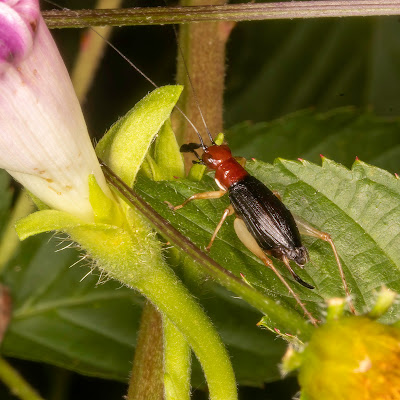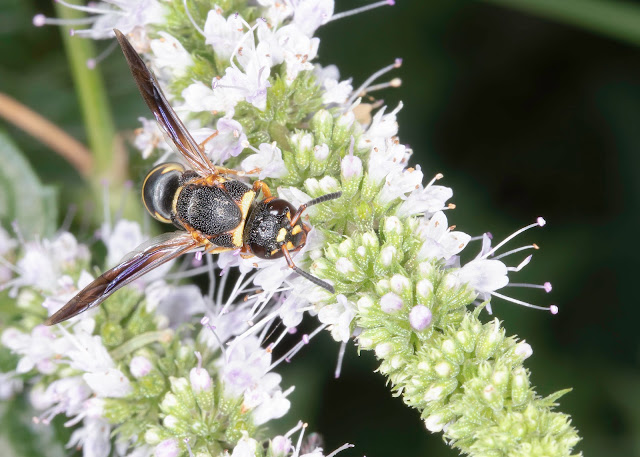Even thought I'm not very good at it, I love macro photography. I've written recently about my experience with a new flash unit, and I've tried to make more use of it.
One of the problems I've had for a long time is wrestling over depth-of-field. My trusty Canon EF-S 60mm f/2.8 Macro USM lens has served me well over the years, but because of natural light, I was prone to shooting it wide open at f/2.8. Thus the shallow depth of field.
It's possible to teach an old photographer new tricks, though. With a ring flash, there's no reason why I couldn't stop down. My macro lens can stop down to f/32, so I gave that a try. The first problem I ran into at f/32 was that my shots were dark. I compensated to this in Lightroom, where I was able to recover amazing detail. I do need to learn how to goose up the strength of the flash, if it's possible.
But the low f-stop really made a difference. Here are two recent shots:
It's a tiny little sweat bee belonging to the genus Augochlorine. I would normally have to create a focus stack to get this kind of DOF, but shooting at f/32 did a darn good job for a lot less work.
Now, this shot wasn't quite this sharp to begin with. I ran it through a couple of plug-in filters that I had bought from Topaz Labs: Sharpen AI and DeNoise AI. I'll have to tell you more about those later!








